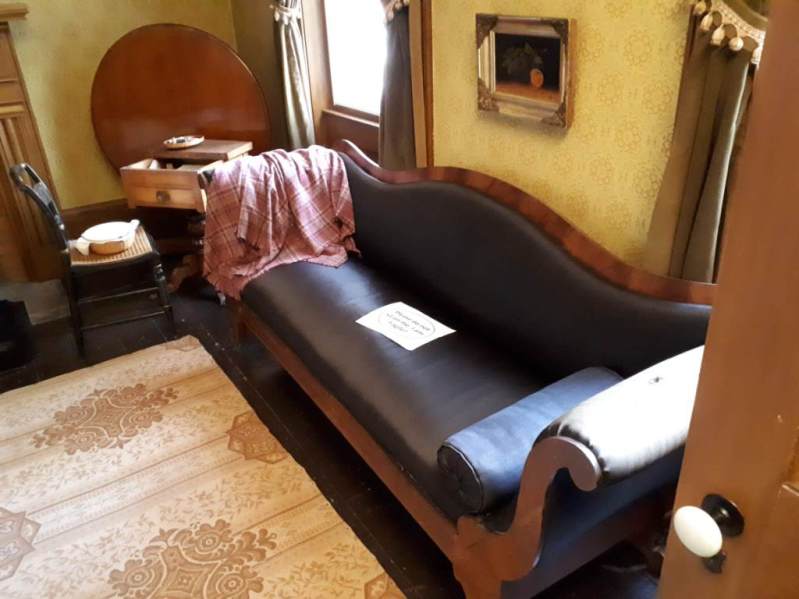The Gibson House Museum in North York, now one of ten City of Toronto Museums, is one of the first museums to which I was exposed as a child, and still one of my favourites today.
Having visited many times informally in recent years (as at Hogmanay in December 2017), I treated myself to a formal tour this afternoon. It was a delightful experience, and the information supplied by the knowledgeable costumed guides solved a few mysteries for me.
I have a memory of a school class visit as a child, long ago, during which I was seated on the left side of a glossy black horse hair couch in the front parlour. (I wonder now if this really happened, as today’s visitors are certainly not permitted to sit on the historic furniture.) The couch I remember is still there.
Today the guide explained how horse hair from manes and tales, when woven with linen, made a naturally water-repellent surface, very practically suited for upholstery. She noted that it could be scratchy, though, and in my mind’s eye I seem to recall the prickly feeling of the fabric under my hands as I perched on the couch.
The museum features a large demonstration loom, about which I’ve been curious (photo from Facebook below). Well, something I never knew is that David Gibson’s family kept sheep on the farm, perhaps 20 of them at a time, which would have produced a great deal of wool. Gibson’s father in Scotland was a weaver, and he had himself been trained to follow in his father’s footsteps. Gibson, of course, became a land surveyor (and farmer), but I now gather that he kept a hand in with the weaving, using the wool produced from his own farm. Makes sense!
Passing by the Gibson House Museum on a winter’s day, you can often catch the delicious smell of wood smoke on the wind, coming from the museum’s historic – and operating – kitchen. On my visit today, I was offered hot tea and warm cookies, and told about the puddings being cooked in the fireplace. (A spotted dick was boiling away in a pot on the hearth.) What a lovely atmosphere in which to learn about the history of early nineteenth-century Ontario, including the story of the Rebellion of 1837.
Toronto is very lucky to have this beautifully restored historic house, saved in the 1960s by the efforts of the North York Historical Society, with friendly and passionate staff running many educational programs all year long.
A fitting first visit for my 100 Museums Challenge (see 100 Museums Challenge)!


